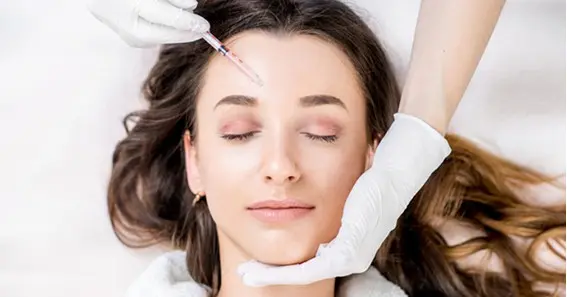Post Preview
As society increasingly seeks ways to maintain youthful vibrancy, non-surgical facial rejuvenation has become a preferred method for many. These methods offer a blend of practicality and effectiveness, allowing individuals to enhance their appearance without succumbing to the complexities and recoveries associated with surgery. With such treatments, individuals can address their beauty goals while effortlessly maintaining their day-to-day activities.
Key Takeaways
- Non-surgical facial rejuvenation is popular for those seeking to enhance their appearance without invasive procedures.
- Techniques such as Botox, dermal fillers, and laser treatments offer practical solutions for reducing signs of aging.
- Considerations around non-surgical rejuvenation include recovery time, costs, and potential side effects.
- The demand for these treatments is on the rise globally, thanks to advancements in safety and technology.
Introduction to Non-Surgical Facial Rejuvenation
Facial rejuvenation encompasses a variety of procedures aimed at reviving the youthful quality and charm of one’s appearance. Pursuing a more radiant and youthful visage has led to the proliferation of non-surgical options. This includes various approaches, from fillers and injectables to cutting-edge lasers, each designed to restore vibrancy and tackle signs of aging without incisions. A prime example of these services is RenewMD Botox Services in Sacramento, highlighting the trend of seeking aesthetic improvements with minimal downtime.
Also Read P: An In-Depth Look At The Characters Of Fourth Wing By Rebecca Yarros
Why Opt for Non-Surgical Methods?
The decision to opt for non-surgical methods lies primarily in their advantages. Mainly, these procedures eliminate the need for general anesthesia and the extended recovery periods typical of surgical solutions. Non-surgical rejuvenation allows individuals to experiment with different looks or address specific concerns like wrinkles or volume loss without committing to more permanent surgical results. Techniques like Botox can smooth dynamic wrinkles while fillers volumize and contour the skin. These treatments collectively offer a customizable and reversible solution, presenting an attractive option for those hesitant about going under the knife. This flexibility is especially appealing in today’s fast-paced world, where recovery time needs to be as minimal as possible to accommodate personal and professional commitments. These methods have gained considerable traction for their ability to deliver impressive results without the inherent risks and recovery time associated with surgical interventions, further explored by the American Society of Plastic Surgeons.
Understanding Botox Treatments
Botox has long been a staple in non-surgical cosmetic treatments, renowned for its ability to treat wrinkles by temporarily paralyzing facial muscles. This injectable, derived from the botulinum toxin, effectively smooths out fine lines, particularly around the eyes and forehead, by inhibiting muscle movement. Many individuals favor Botox not only for its efficiency but also for its quick administration and minimal downtime. It is one of the most extensively studied and widely approved non-surgical procedures globally, as corroborated by FDA announcements. The approval and widespread use underscore its safety profile, making it a stalwart choice in cosmetic enhancements. Furthermore, Botox has found utility beyond aesthetics, treating medical conditions like chronic migraines and excessive sweating, thus broadening its appeal.
Exploring Dermal Fillers
In contrast to Botox, dermal fillers address the loss of skin volume rather than muscle activity. Composed of substances like hyaluronic acid, these injectables work by plumping the skin and filling areas that have succumbed to aging-related sagging. They are especially popular for augmenting lips and cheeks, which lose their fullness over time. Besides providing immediate results, fillers offer diverse applications—from contouring jawlines to erasing nasolabial folds. Unlike Botox, which has consistent effect timelines, fillers allow customization in terms of longevity and volume, tailoring results to each person’s desires. As the technology behind fillers advances, newer formulations with longer-lasting effects and improved safety profiles continue to emerge, providing even more reliable results.
The Role of Laser Treatments
Lasers have evolved into a versatile tool for facial rejuvenation, adept at confronting various skin issues, including pigmentation irregularities and textural concerns. These treatments utilize concentrated light to promote collagen production, a key protein for youthful skin resilience. From ablative lasers that physically remove damaged skin layers to non-ablative options that encourage skin regeneration from beneath the surface, there’s a solution tailored to every individual’s needs. Despite their effectiveness, laser treatments require professional expertise for optimal results, ensuring safety and maximizing skin health benefits. Continuous innovation within laser technology leads to novel approaches that minimize discomfort and recovery time while enhancing aesthetic outcomes.
Considering the Costs and Recovery Time
Cost is frequently a pivotal aspect influencing individuals’ choices towards non-surgical methods. Unlike surgical alternatives that cost thousands, non-surgical treatments typically offer more budget-friendly options, although the exact price varies with the procedure choice and frequency. Recovery times are another consideration, with most non-surgical procedures boasting little to no downtime, enabling individuals to resume their engagements almost immediately. This aspect alone enhances their appeal and accessibility, catering to those leading busy lifestyles. As workplace expectations evolve and remote work becomes commonplace, the ability to discreetly undergo enhancement procedures without significant disruption to daily life is increasingly valuable.
Potential Side Effects and Safety Measures
Despite their generally high safety profiles, non-surgical treatments are not without potential side effects. Common reactions may involve redness, swelling, or tenderness at injection sites, albeit temporary. To mitigate risks, thorough consultation with qualified professionals is crucial. Following safety protocols, such as adhering to aftercare instructions and verifying providers’ credentials, ensures that these innovative beauty solutions do not compromise the individuals’ safety and satisfaction. Additionally, transparency between patients and practitioners regarding realistic expectations and potential outcomes is essential to achieving desired cosmetic results.
Future Trends and Technological Advancements
Ongoing technological advancements continuously refine and expand the scope of non-surgical facial rejuvenation. Innovations in application techniques and formulation enhancements promise more precise, longer-lasting results. As demand grows, so does the exploration of new methods that combine efficiency with even greater safety measures, propelling the aesthetics industry into a new era of non-invasive beauty enhancements. The convergence of artificial intelligence and cosmetic procedures presents opportunities to create more personalized and anticipatory interventions that align closely with individual aesthetic goals and medical needs.
Conclusion
In summary, non-surgical facial rejuvenation offers an attractive alternative for individuals seeking age-defying results without surgical intervention. Choosing the appropriate method often involves consulting with adept professionals who can provide personalized guidance. As technology continues to innovate, these treatments will likely remain firmly at the forefront of beauty, offering an appealing blend of efficacy, safety, and convenience. By understanding the nuances of each procedure and embracing informed decision-making, potential recipients can partake in a journey toward enhanced confidence and aesthetics.










